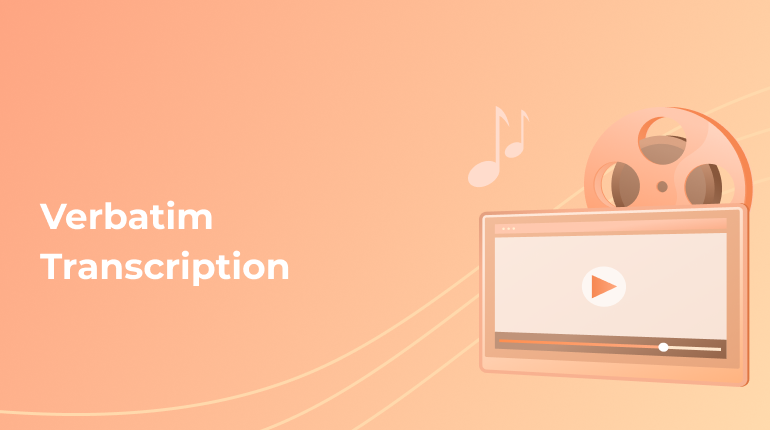Verbatim Transcription Explained: How To Work With The Texts

Dealing with verbatim transcription is more challenging, don’t you think so? It is a complicated and all-encompassing way to note the speaker. But it can be easier when you know the basics. In our article, you can find necessary facts about verbatim transcription. When should it be used? How does it differ from a regular transcribing practice? These questions are to be answered in the text.
The Notion of Verbatim Transcription: Major Aspects
Verbatim transcription is an interesting concept. It is worth a more detailed consideration because not every user understands the idea behind the verbatim transcript. It is a detailed transcription practice that reproduces each element of the speech in the same way it is spoken, to put it shortly.
When you are asked to present a verbatim transcript, you are supposed to render even the speech’s minor details. Did the speaker make a mistake and forgot about the message? In a verbatim transcription, your task is to render these minor mistakes, too. You should feel free to insert grammatical flaws in your transcript. The main task here is to show the contextual environment of the original speech.
From one side, working with the verbatim transcript type is easier because you can transcribe everything that your ear can catch. But at the same time, verbatim asks you to reproduce the details, which you can accidentally ignore since they are less important to the overall speech. In other words, we can call it a word-for-word transcript.
How To Differentiate Between Verbatim and Non-Verbatim Practice?
When dealing with the transcripts, you will need to grasp the main two approaches. The first one is called a verbatim transcript. We have already covered the main concepts behind it. Let’s remind you about the most vivid examples:
- You record the speech and transcribe it. This is a paramount task of any transcriber.
- But you should also pay attention to every sound produced by the speaker. Are there any non-speech sounds? Do you hear something weird? Did the speaker self-correct himself? Any stutter experience should also be noted.
This is why many people consider a verbatim transcript to be a more demanding and tiring activity. You should carefully listen to the speaker, consider the overall context, and differentiate weird sounds from the whole speech flow. Is it easy? Absolutely not. This is a complicated task.
Let’s talk about non-verbatim practice. This one is thought to be an easier way of transcription. When you resort to a non-verbatim transcript procedure, the speech is your paramount task. You should have no worries about the weird sounds, filler words, or mistakes.
Your task here is to render the text correctly, paying attention to the speaker’s main message. This is a common way which is used quite often. You don’t need to spend hours trying to catch the noise coming from another person either in the video or audio.
Let’s look at the examples and then get the idea of what has been explained in the paragraphs.
- Don’t you think that we need to buy a ticket now?
- Um, actually… Don’t you think that… that we need to-o-o buy a ticket um now?
The first example corresponds to the non-verbatim transcript. You can see that we rendered only the principal information of the message avoiding weird sounds.
In the second case, we have a more detailed rendition. We paid attention to the sounds and repetitions. This is what verbatim transcript is all about.
Why Might You Need a Verbatim Transcript?
When working with verbatim texts, you can easily get an idea about the context of the transcript. Who were the people? What was the mood of the conversation? You can even guess the intonation used in the speech. When are the verbatim transcripts used?
- First of all, you can use this type of transcript when communicating with a focus group.
- Another great part refers to source quotations.
- When you request a legal transcription, you should also request verbatim.
You may think that these additional words and word combinations may only cause difficulties in understanding the text. But there are cases when the use of verbatim is justified. For example, you can’t quote the source directly if you don’t insert different filler words, transcribed sounds, and other weird things from the speech.
Tips on How To Choose the Way To Transcribe the Text?
How should you know what type of transcript to use? The answer is quite simple. You never know what method to resort to until you see the actual task. When reading through the requirements or communicating with the commissioner, you may learn which type of transcription to choose.
What does your customer want? What details should be included in the text? How precise should the transcript be? Is it necessary to render the mood of the conversation? How much time do you have? You should first answer these questions, and only then can you make the final decision.
